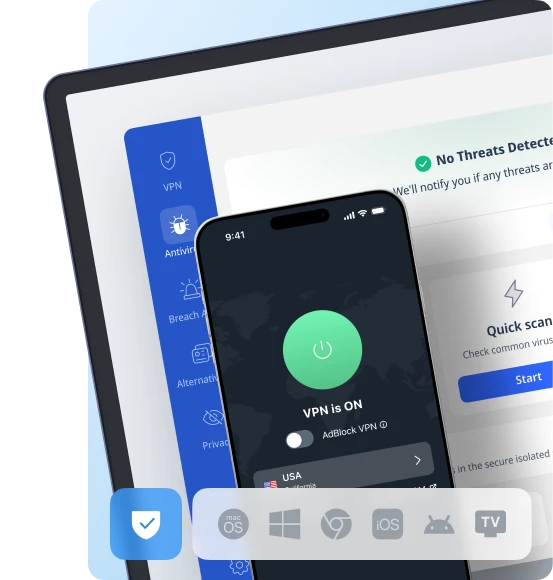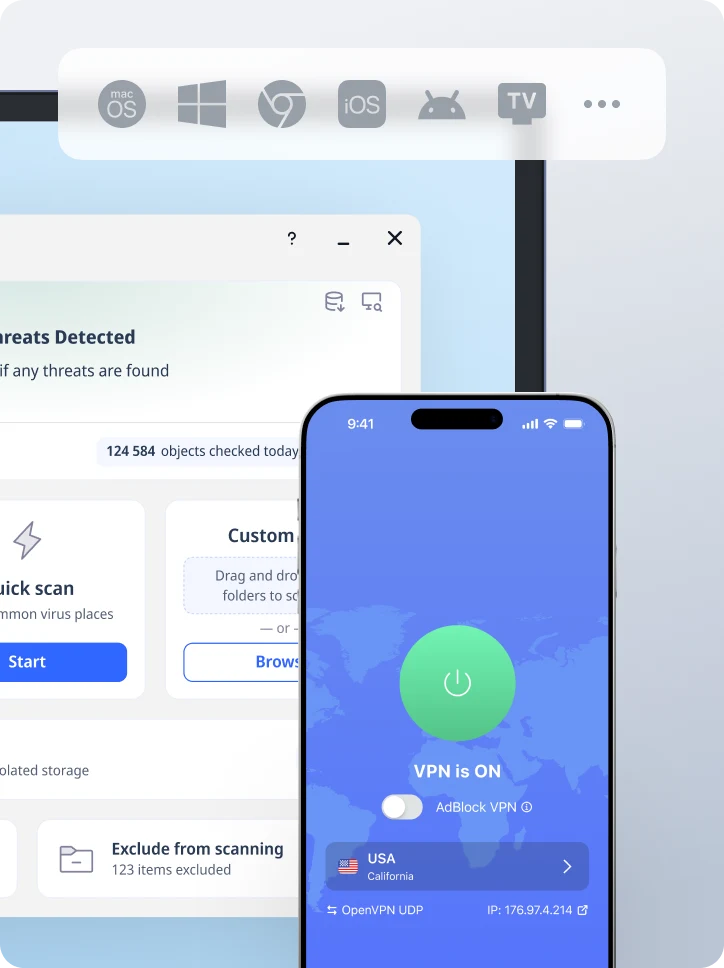What Are DDoS Attacks & How to Prevent Them?
It would be good if 20 customers were in your store. However, if more than a thousand non-paying clients entered and blocked your shop entrance, you might be in trouble. This is the way DDoS attacks operate in a cyber world.
What is the definition of DDoS and the way it works?
DDoS is an abbreviation of distributed denial-of-service. These are such attacks that make the target network, service, or server deny access to any user who tries to utilize them. It is possible to compare it to the traffic jam. Meaning, the cars sent by a hacker congest the main road while the legitimate traffic coming from the side road is impossible to get in.
Such attacks are rather powerful because they utilize multiple computers or other tools. The hacker generates a network by infecting tools, transforming them into bots, and directing them remotely to a particular IP address, everything at once. This might lead a service to be crashed.
These attacks might last more than 24 hours and are complicated to trace. Your PC may be a part of a botnet army, which is responding secretly to malicious commands, and you will not be even able to be aware of it. It is difficult to notice because only signs might be marginally eliminated performance or the overheating tool. The traffic which bombards the target comes from a legitimate tool. It makes it even more complicated to distinguish between malicious and genuine attacks.
DDoS attacks might aim at a particular element of network connection or a combination of them. Each connection that was made over the Internet is going via OSI model layers. The vast majority of DDoS attacks occur in the next 3 layers:
- Network layer (which is layer 3). Attacks that occur here include IP/ICMP Fragmentation, ICMP Floods, and Smurf Attacks.
- Transport layer (which is layer 4). Such attacks include TCP Connection Exhaustion, UDP Floods, and SYN Floods.
- Application layer (which is layer 7). In most cases, HTTP-encrypted attacks.
DDoS attacks types
Number 1. TCP Connection attacks
These attacks are better known as SYN flood attacks. They occur when a 3-way TCP handshake between server and host is never completed. Here, the handshake might be initiated. However, the hacker leaves the ports open and the server hanging. Meaning, the server is impossible to take any other request. So the hacker continues to flood it with more handshakes, making it eventually crash.
Number 2. Volumetric attacks
These are the most common DDoS attacks’ type. It just consumes every available bandwidth between the Internet and the target. It is performed by utilizing botnets and leading them to a particular target.
For example, it might be a hacker who spoofed the victim’s IP and made multiple requests to the open DNS server. In case the DNS server responds, it will send more information to a victim than they might handle.
Number 3. Fragmentation attacks
The traffic which is sent over the Internet would be divided into information packets. They are assembled and travel in various ways depending on if UDP or TCP transport protocol is utilized. This attack sends fake information packets distorting the flow of information and thus overwhelm the server.
Number 4. Application layer attacks
Layer 7 or the application layer attacks the target applications. This attack might seem to the server as someone who tries to hit refresh on the same page a number of times. It might seem to be legitimate traffic until your server is overflooded. Such attacks are more complicated and less expensive to detect if compared to network layer attacks.
DDoS amplification types
This is such an attack in which the cybercriminal specifically targets security vulnerabilities in the DNS (Domain Name System) servers. They tend to convert little requests into big ones. So they stifle the bandwidth of the victim and efficiently halt the unfortunate processes of the target server. There are 2 types of them: CharGEN Reflection and DNS Reflection.
DNS reflection
The job of the DNS server is to look for an IP address of whatever domain name you might type in the search bar. It is the address book of the Internet. The DNS reflection attack is such an attack in which a hacker copies the victim’s IP address, starts sending requests to the DNS server, and asks for large replies. These replies are known to be amplified up to seventy times against their regular size, overwhelming the victim instantly.
CharGEN reflection
This is the ancient protocol generated in 1983 for the targets of testing or debugging. Unfortunately, most copy machines and internet-connected printers still utilize this protocol actively, letting hackers exploit age-induced loopholes of CharGEN. The hacker might send multiple information tiny packets under the victim’s IP address’ guise to whichever is running on CharGEN. The tool then floods the system of the victim with User Datagram Protocol (UDP) responses, causing the target server to cut out or reboot altogether and overwhelming it.
DDoS attack numbers
Every year security systems are becoming more and more sophisticated, so are the devices utilized to hack via them.
For example, the average requests of such attacks in the 90s went over barely 150 per second. Comparing this to the hugest recent times DDoS attack, we might view that 1.35 terabits of the traffic per second were thrown at the website. The attack only lasted for eight minutes and crippled the website temporarily.
What is the cost of a DDoS attack?
The DDoS attack monetary damage might inflict on the business in twenty-four hours. So you would need to take measures to never let it happen. Due to Corero Network Security 2018 report, the disruption caused by such an attack via employee productivity disruption lost revenue, and the current security cost of the assault repelling might cost up to $50,000 per attack. But how much will it cost to employ the army of bots and cybercriminals?
The cost of such a service might depend on the desired DDoS attack length. The basic rates start at three hundred seconds and stretch up to three hours. It would be cheaper to order a short attack. Some cybercriminals that provide these services suggest a kind of subscription service. For instance, you might pay sixty euros per month to have access to one attack that will last for three hours.
Is DDoSing illegal?
In many countries, it is illegal. For instance, it might be treated as a federal crime in the USA, leading to imprisonment and penalties. In the vast majority of European countries, it might lead to arrest. In the UK, you might be sentenced to up to ten years of imprisonment.
Can DDoS attacks be traced?
These attacks are rather complicated to trace as long as the vast majority of them are distributed over thousands of other tools. Besides, the ones initiating such attacks usually apply a lot of effort not to be traced.
You might identify these attacks if they occur by utilizing specific cybersecurity devices to analyze the traffic. Nevertheless, it is often too late to stop them. You might analyze the information, at best, and make the proper cybersecurity modifications for the future.
Will VPN help prevent DDoS?
DDoSing is commonly utilized to blackmail publishers and developers or to harm the sales or reputation of the specific platform or person. Nevertheless, individual users might also be affected. Usually, it occurs to online gamers. The opponent may try to DDoS you in order to disrupt the gameplay, which might be frustrating.
You cannot prevent the attack against your game server. Nevertheless, in P2P gaming, if you connect to other players directly, the opponent might look up the IP address and utilize it to DDoS you. You might prevent it if you utilize VPN to mask the original IP. If your opponents do not know your IP address, they will not be able to attack you.
VeePN is a service that might protect you from various attacks, including DDoS. Get VeePN now and enjoy multiple advantages of this VPN service!
VeePN is freedom
Download VeePN Client for All Platforms
Enjoy a smooth VPN experience anywhere, anytime. No matter the device you have — phone or laptop, tablet or router — VeePN’s next-gen data protection and ultra-fast speeds will cover all of them.
Download for PC Download for Mac IOS and Android App
IOS and Android App
Want secure browsing while reading this?
See the difference for yourself - Try VeePN PRO for 3-days for $1, no risk, no pressure.
Start My $1 TrialThen VeePN PRO 1-year plan







